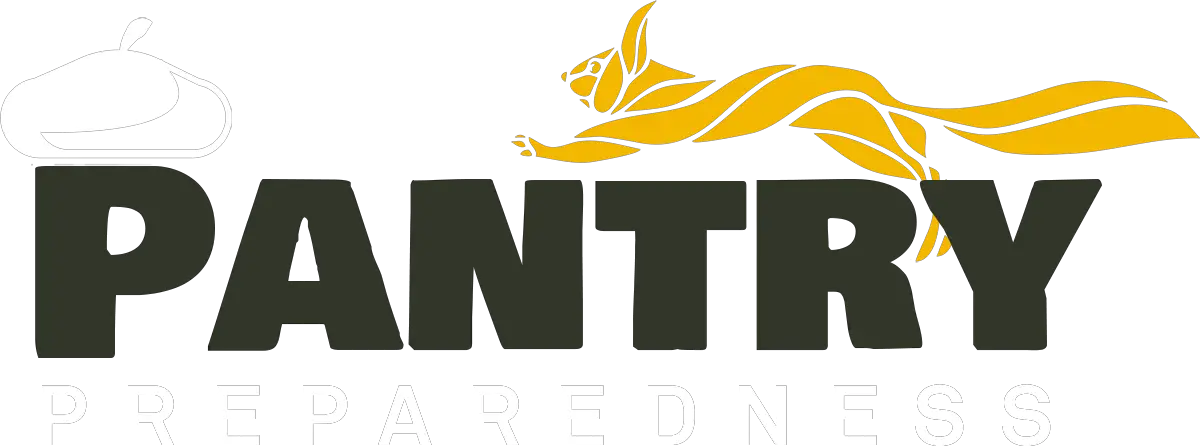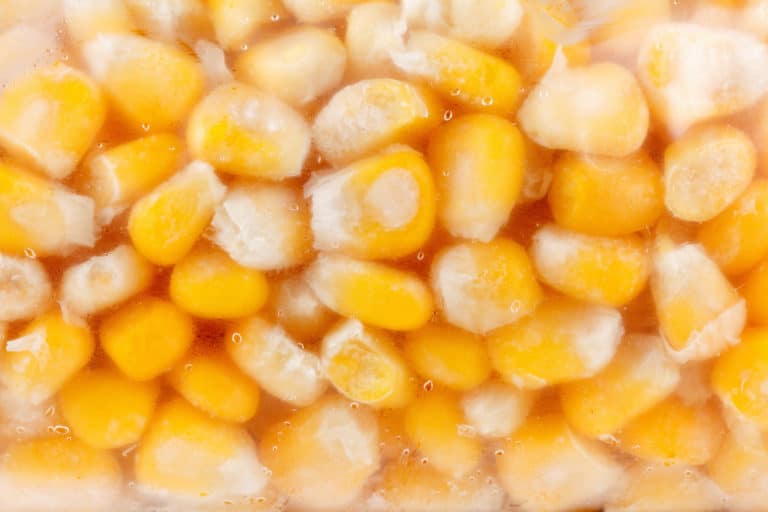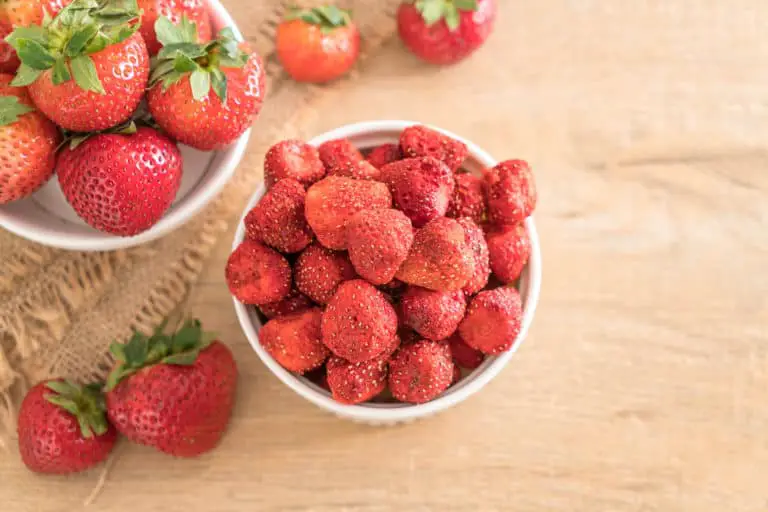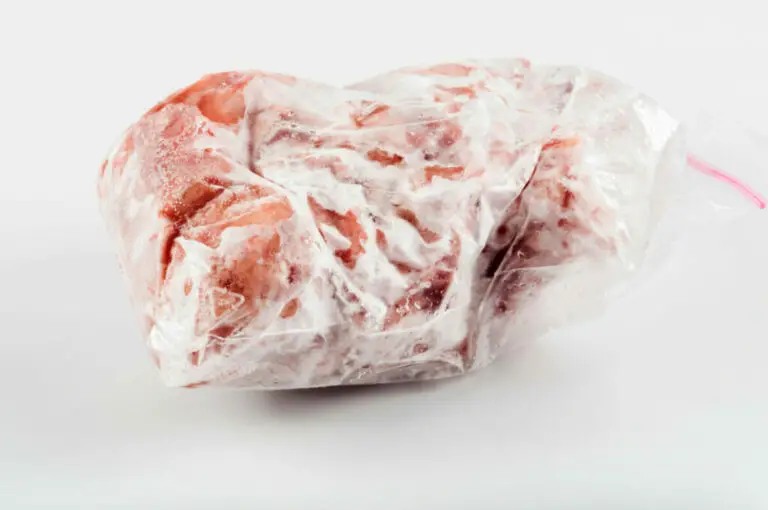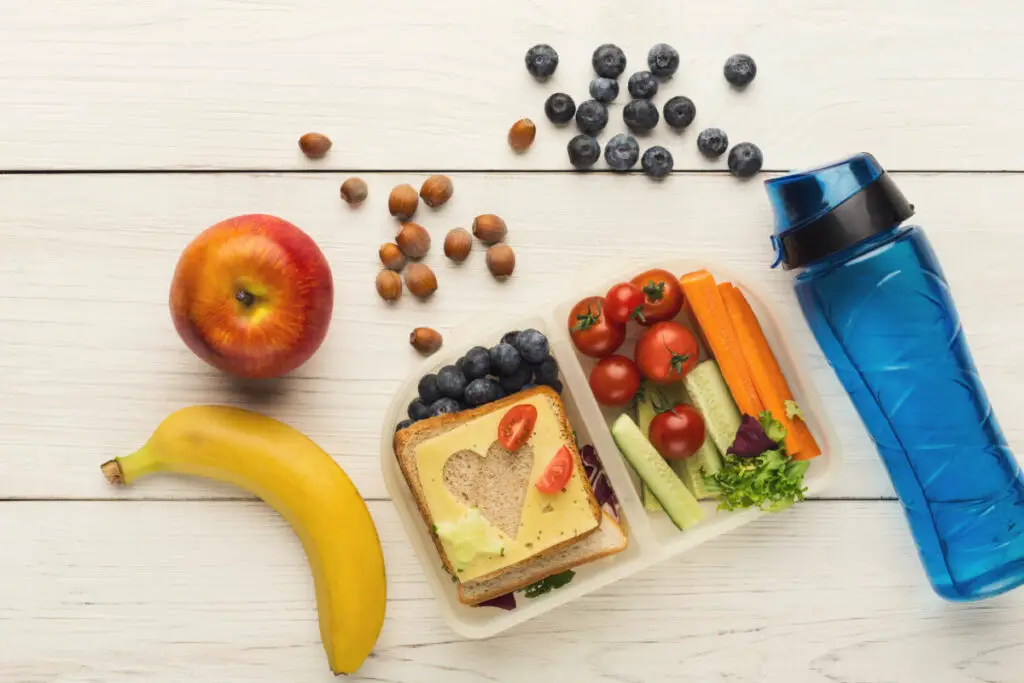
Food storage will help you be prepared for hard times. But even when times are good it helps you save money. But it is important to do some diligent research! Here are the best ways to preserve and protect food storage preserves from going bad!
To store food for a long time, buy reusable containers like plastic freezer bags, glass jars, and plastic containers to keep food fresh in dry, cool, and dark places. You can also try out preservation methods like canning, freezing, and pickling to store food safely.
It’s important to know how to keep food fresh for short term storage and very long term storage. There are differences in food storage with fridges, freezers, and pantries. So let’s go over what to do and think about when making sure your food storage cache doesn’t go bad anytime soon!
1. Buy the Best Food Containers
Having the right containers for different types of food is one of the biggest aspects of keeping stored food fresh. Some of the different kinds of containers to have on hand are glass, plastic, foil, or cloth containers. Some of the best food containers are sturdy and airtight.
Plastic Bags Containers and Jars
Zip-top bags are a good start, but even though they are convenient, they can also turn out to be pricey as more and more zip-top or resealable bags need to be bought over and over! Brands like Stasher and Ziploc sell reusable or freezer-safe storage bags for food. One of the biggest benefits to bags like this is that they take up less space in the freezer or fridge than bulkier Tupperware containers will.
Glass Containers and Jars
For other foods and for sturdier containers, try out glass containers and jars or containers that have well-fitting lids. These containers can come in many shapes and sizes for all kinds of food. Glass containers are nifty since they can be used to bake and store food all in the same container. Glassware containers and jars can even be dishwasher safe when it comes to clean up and is more affordable since they can be used over and over!
Random empty jars that are used to hold sauces, pickles, jams, or other items can be repurposed to hold other foods too. Which saves you money. Other benefits to glass are that you can see the contents easily and there is less plastic waste than disposable plastic bags.
Reusable Containers
Lots of foods will stay fresh for longer when they are not stored in their original packaging. Keeping this in mind, it is best to keep a variety of different-sized food-grade plastic and glass containers on hand to better store all forms of food. Reusable containers, bags, and jars made for this purpose can be bought in singles or packs online for prices ranging from $11 to $70. Instead of leaving food in loose or open packages, transfer it to food storage bags or other containers to stay organized. This will also better prevent messy spills, cut down on waste, and prevent bugs and pests from getting into your food storage.

2. Buying the Proper Food to Preserve
The best foods to store for extended food storage are foods that take a long time to go bad and keep easily such as dried beans, white rice, honey, powdered milk, peanut butter, ramen, rolled oats, dried pasta, salt, pemmican, baking soda, vinegar, canned foods, ghee, sugar, wheat berries, coconut oil, olive oil, and anything freeze dried!
There are more foods and supplies besides those, but what I listed above is a great place to start for buying in bulk. Even oxygen absorbers and mylar bags can be bought to store these kinds of foods if you’re really serious about storing them for as long as humanly possible.
3. Make the Most of Basement Temperatures and Space
Basements are a surprisingly important element when it comes to setting up food storage. This is because the basements in homes are usually the most temperature-stable place in the building since they are often underground and have few or no windows. This means that most basements provide a dark and cool space for food!
The best foods to store in basements include root vegetables bought on sale and produce put in mesh bags to let air circulate and reduce the likelihood of pest problems in the food. Basements are fantastic since they offer a lot of room for food storage, and the temperature is generally cooler than the rest of your house, which is ideal when it comes to preserving food. Use your basement to it’s full potential!
4. Freezing Foods
Many people will be impressed and surprised to learn how useful freezing food can be! For instance, tons of recipes ask for a small amount of sauce or tomato paste, which means whatever is leftover in the can will go bad after just a few days in the fridge. Instead of letting the excess spoil, try putting the remaining paste or sauce in a flat layer in a freezer bag so that pieces of it can be used in future recipes without wasting food unnecessarily!
Freezing Herbs
Fresh herbs are a delicious option when it comes to cooking, but it’s hard to use them up in one recipe. Instead of wasting them, chop them up and freeze them in ice cubes made of olive oil and water instead! These herb ice cubes can then be put to good use in the future for months to come, and they are saved from getting dried out or rotting.
Freezing Fruits
When prepping fruits, try to remember that once they are peeled or cut, they should be kept in either the fridge or freezer. The best fruits to freeze are banana slices, berries, cherries, nectarines, mangoes, peaches, pineapples, plums, and rhubarb. Fruits can be stored in the freezer for up to 12 months. Although tomatoes do not freeze well at all, tomato sauce does freeze well! To freeze fruits, wash them and completely dry them, remove all peels or pits, cut up the fruit if it is bigger so it can be easily thawed or blended later, and freeze it on a baking sheet first for 15 to 20 minutes. After the fruit has been frozen and is holding its shape well, it can be transferred to a freezer bag or some other airtight container!
Freezing Vegetables
Some vegetables can handily be frozen and sit in a freezer for as long as 8 to 12 months. Nearly any type of vegetable can be frozen, except for a select few that have an exceptionally high water content, like celery, endive, lettuce, cucumbers, cabbage, watercress, or radishes. Simply blanch the vegetables first, then store them in freezer storage bags or sturdy containers in the freezer. The more airtight the better, and research each vegetable before tackling the freezing process to be thorough.
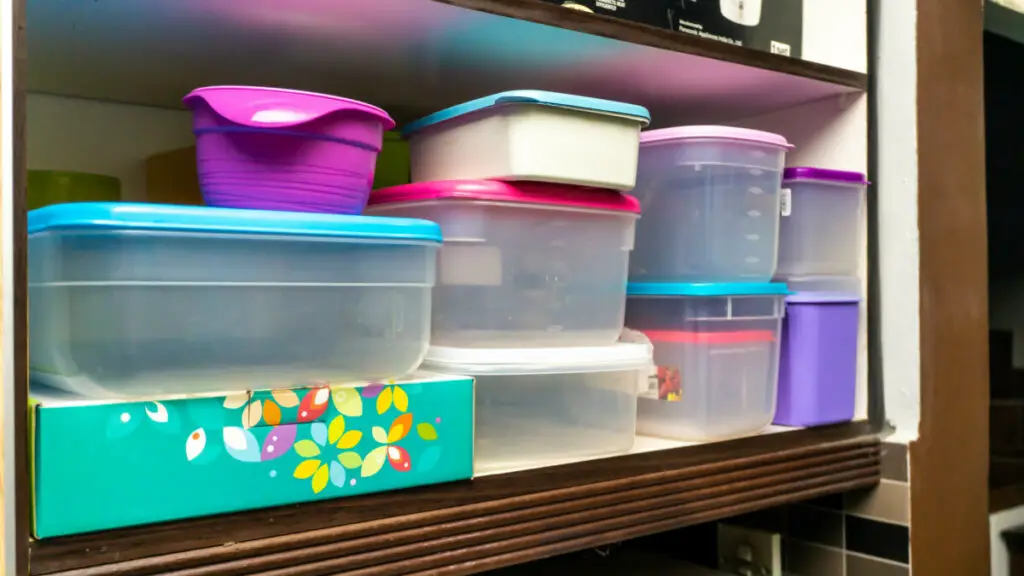
5. Label Food Storage Containers Well
If you buy containers that are stackable and fit together you’ll be glad you did because they will fit better in the fridge, pantry, or basement! Make sure to label containers with the name of the contents and write the date that the food was stored or its expiration date so food can be eaten, replaced, or thrown out when needed.
Face labeled containers outward so that people don’t need to dig around or turn them to read what they say. Finally, also make sure to keep a well-organized list of all the food in food storage on a physical or online spreadsheet so that nothing is forgotten, and everything gets rotated and replaced properly.
6. Invest in Canning Supplies and Tools
Mason jars and canning containers, while odds and ends to some people are a must when it comes to food storage. Canning foods means the contents will not be at risk of getting too wet or drying out. Canning your food also means that the food will taste fresher, and retain more of its nutrients. and You can get good quality canning equipment from the Prepworks company on Amazon for around $20 to $30. The jars will last for a long time and can be used to store sauces, pastes, and jams.
Pros and Cons of Canning
By canning some foods, the nutritional value of the food is usually prolonged, but sometimes vitamins can be lost during the heating process when prepping food to be canned. Also, vitamin content usually decreases about 5-20% for each year that the canned good is stored, so keep this in mind if health and nutrition is a high priority.
Cans are great because the food can be easily eaten straight from the container if needed. The downside? It’s tough to can foods since canning requires a sterile environment so nothing gets contaminated. It is also crucial to keep canned foods at a safe temperature so dangerous microbes do not grow. Prevent possible mold growth by using a proper canning process, then test the seals of the canned jars before storing them away in a basement, garage, or cupboard.
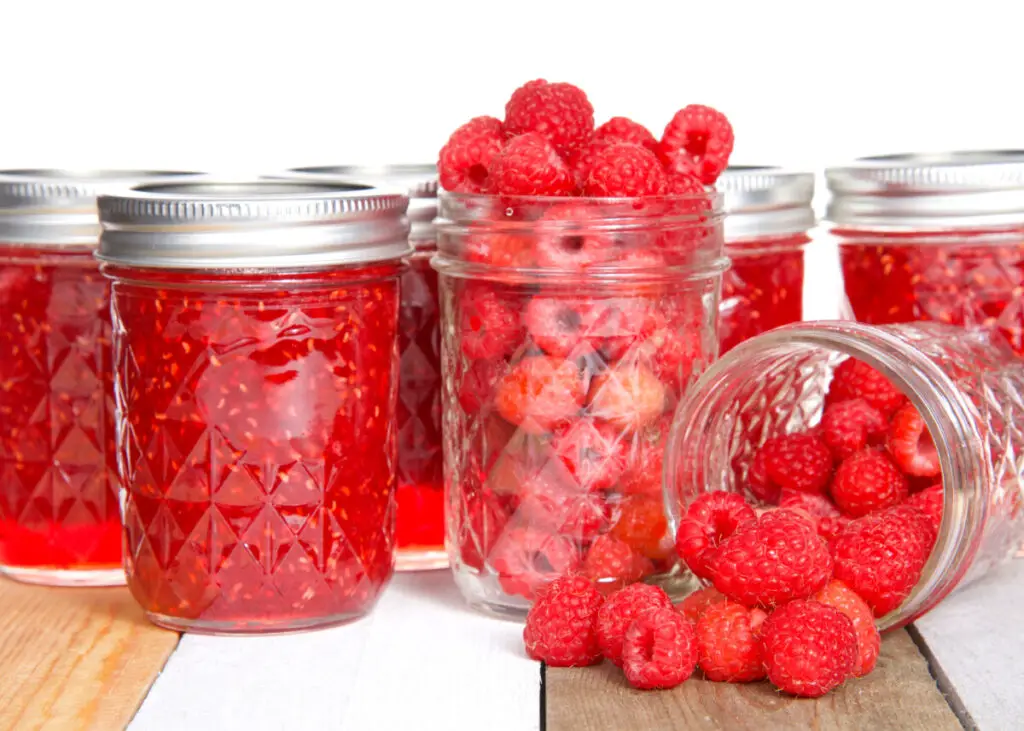
7. Know How Perishable Different Types of Food Are
Before deciding what to store, a food storage prepper must do their due research for what to store, and which foods store longer than others. For instance, instead of storing cooking oils in their original big containers that they are bought in, try putting them in smaller bottles instead. Each oil can be stored in its own bottles that can be refilled in the future and then the larger original store-bought bottles of oil can be stored in cool, dark places far from the heat of the kitchen to lengthen the shelf life of the oils.
Another perishable food that can be stored better is whole wheat flour, which can be kept longer if stored in the fridge. Dairy foods and products that are dense, like yogurt, sour cream, and cottage cheese can keep longer and keep a better seal against the lid if they are turned upside down when stored in the fridge. Even brown sugar can be kept from drying out and becoming unusable if it is transferred to a sealed container and a marshmallow or two are placed with the sugar.
8. Drying and Dehydrating Food
Not only does drying food make it more flavorful, but it is also a cost-effective way to store all kinds of food and it will be smaller and easier to store after it has been dehydrated! Since dehydrating takes out the water from fresh food, bacterial growth is prevented. There are a few ways to dehydrate food such as a commercial grade dehydrator or a home-use dehydrator. Dehydration can also be accomplished by hanging up herbs to dry, oven-drying foods, or using the power and energy of the sun to make a solar food dryer for food storage.
Foods should be dried until the moisture content level is decreased to around 20% or less. Some specific veggies and fruits need to be blanched, or dipped quickly in boiling water, to better preserve them. Keep in mind that drying and dehydrating things can also take a lot of time, up to ten hours depending on the type of food and the quantity of it.
9. Fermentation and Pickling
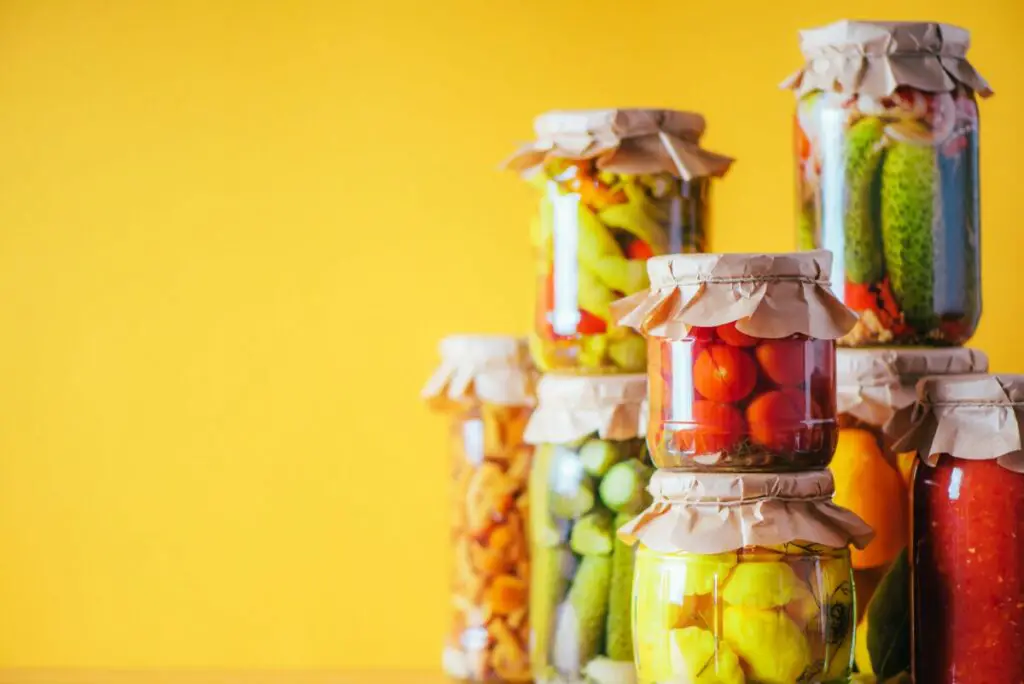
Fermenting and pickling food is excellent for food storage as well, as it boosts healthy probiotics and good bacteria in food. First, chop, grate, and prepare the food in any other needed ways before adding brine. Next, you should put everything in an air-tight container in a cold environment. If someone is fermenting or pickling, you’ll also need to choose a culture to use, like salt, whey, or some other starter culture to use on their food. When fermenting or pickling, you’re going to need to choose a culture to use, like salt or whey (depending on the product).
Make sure to use fresh vegetables, and use only purified or distilled water. Fermenting usually requires lots of salt because salt draws out the water content of food and helps preserve it by stopping and preventing bacterial formation.
